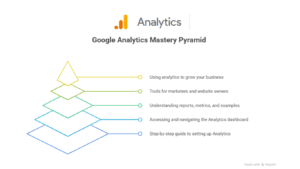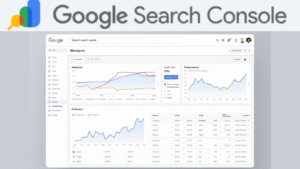As artificial intelligence and large language models (LLMs) like ChatGPT, Claude, Gemini, and Perplexity transform how users search, consume, and interact with content, the SEO community faces a new challenge: How can website owners control what AI systems see and use?
Enter llms.txt — a proposed new standard that could reshape the relationship between websites and LLMs.
What is llms.txt?
Proposed by Australian technologist Jeremy Howard, llms.txt is a simple text file placed at the root of a website, much like robots.txt. But instead of guiding traditional search engine crawlers, it provides instructions to Large Language Models on how to access, understand, and possibly use the website’s content.
In an era where LLMs generate answers by summarizing web content, llms.txt gives site owners a way to:
- Provide flattened, AI-readable content
- Set expectations for usage
- Control how content is presented to AI platforms
It’s not a rule-enforced blocker. It’s more of a “content signal” — a suggestion to LLMs on what and how they should read your content.
How llms.txt Works
Unlike robots.txt, llms.txt isn’t about “disallow” or “noindex” directives. Instead, it allows you to:
- List URLs with summaries
- Include raw, flattened text from web pages
- Provide markdown-formatted versions of web content
- Offer full content files (like
llms-full.txt) for deep AI analysis
Sample llms.txt:
txtCopyEdit# AI-readable content for LLMs
https://example.com/blog/my-best-article.md
https://example.com/docs/full-guide.md
Or a full content file:
pgsqlCopyEdit# llms-full.txt
This is the complete text version of my website in plain markdown.
This structure ensures LLMs have access to clean, readable, useful information — free from JavaScript, ads, clutter, or complex navigation.
Why Is llms.txt Important for SEO?
With traditional SEO, visibility on search engines like Google relied on rankings, metadata, sitemaps, and link signals.
But with LLMs, it’s about who has the most usable, structured, clear content — because LLMs don’t crawl the web in the same way as Google does. Their context windows are limited, and they need content that’s easy to process.
Here’s what llms.txt brings to the table:
✅ 1. Content Control
Direct LLMs to content you want to be used — and omit sensitive or irrelevant material.
✅ 2. Improved AI Visibility
Guide AI systems toward the most valuable and relevant sections of your site, potentially improving visibility in AI-generated answers.
✅ 3. Flattened Site Content
Turn your complex web structure into one digestible file for analysis, entity recognition, and more.
✅ 4. Brand Safety
Ensure LLMs have accurate, up-to-date brand information to avoid misrepresentation.
✅ 5. Competitive Edge
Early adopters can shape how LLMs interact with their sites — setting a standard others may follow later.
Real-World Examples
Several major players are already using or testing llms.txt and llms-full.txt files:
- 🔹 Anthropic: llms-full.txt
- 🔹 Zapier: llms-full.txt
- 🔹 Hugging Face: llms.txt
- 🔹 Perplexity: llms-full.txt
These examples showcase how brands are proactively flattening their content for AI models to access.
Tools to Generate llms.txt
You can manually create your llms.txt file or use some of the available generators:
- 🔧 Markdowner – Converts HTML to markdown
- 🔧 Appify’s llms.txt Generator
- 🔧 FireCrawl – One of the first tools made for
llms.txt - 🔧 Website LLMs (WordPress Plugin) – Auto-generates
llms.txtfrom posts/pages
Caution: Vet any tool before using it. Your content is valuable — don’t expose it to security risks.
Challenges and Criticism
Despite its potential, llms.txt isn’t without skepticism:
- ❗ Not all LLMs will honor the file (it’s not enforceable)
- ❗ Overlap/confusion with
robots.txtandsitemap.xml - ❗ Risk of keyword/link stuffing for manipulation
- ❗ Potential exposure of site content to competitors
Some industry experts argue that AI models already behave like search engines, and no extra standard is necessary. But others believe llms.txt could be the first step toward better AI content governance.
llms.txt and GEO (Generative Engine Optimization)
In the world of GEO — Generative Engine Optimization — there are almost no clear protocols for improving visibility in LLMs.
llms.txt provides:
- A technical foundation for AI content optimization
- A structured way to communicate with AI models
- A chance to shape how LLMs interpret your digital assets
In the future, llms.txt might be what schema.org and robots.txt where to SEO a decade ago.
Final Thoughts: Should You Implement llms.txt?
If you’re serious about your content being visible in the AI-powered future of search, you should start experimenting with llms.txt now.
Even if adoption isn’t widespread yet, it offers:
- Zero downside
- Clear structure
- More control over how your content is used in LLM responses
In a world where one AI-generated answer could replace dozens of search engine clicks, being the source of that answer is the new win.
So ask yourself:
“Am I optimizing for search, or for the answer?”
Key Takeaways
- llms.txt is a proposed standard for LLMs to crawl, read, and understand website content.
- It is inspired by
robots.txtbut designed specifically for AI readability. - It helps improve control, visibility, and performance in AI-powered platforms.
- Tools are available to generate it easily.
- Adoption is growing, and the SEO community should pay close attention.





